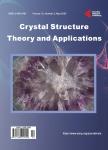ZnO Heteroepitaxy on Sapphire Using a Novel Buffer Layer of Titanium Oxide: Optoelectronic Behavior
ZnO Heteroepitaxy on Sapphire Using a Novel Buffer Layer of Titanium Oxide: Optoelectronic Behavior作者机构:Department of Biomolecular Functional Engineering Ibaraki University Hitachi Japan Department of Electric and Electronic Engineering Ibaraki University Hitachi Japan
出 版 物:《Crystal Structure Theory and Applications》 (晶体结构理论与应用(英文))
年 卷 期:2013年第2卷第2期
页 面:100-105页
学科分类:1002[医学-临床医学] 100214[医学-肿瘤学] 10[医学]
主 题:ZnO Ti2O3 Plasma-Assisted Epitaxy Photoluminescence Free-Exciton Bound-Exciton
摘 要:Optoelectronic property of ZnO epitaxial layer grown by plasma-assisted epitaxy at temperature as low as 340°C using Ti2O3 buffer layer on a-sapphire were studied by low temperature photoluminescence at 10 K comparing to the layers on c-sapphire and a-sapphire without the buffer layer. The near band-edge emission consisting of free-exciton emissions and neutral-donor bound exciton emissions was significantly dependent on the buffer thickness and dominated by the free-exciton emissions in the layer grown on the very thin buffer layer about 0.8 nm, whereas the intense emissions by neutral-donor bound excitons were observed in the ZnO layer on c-sapphire. The structural behavior indicated the donor was originated from the three-dimensional growth of ZnO layer and details of the optoelectronic feature suggested the residual donors were Al and interstitial-Zn.



